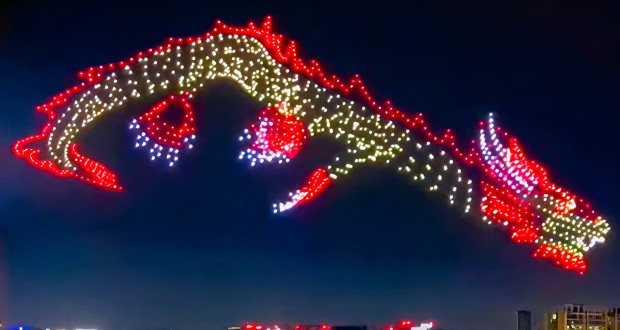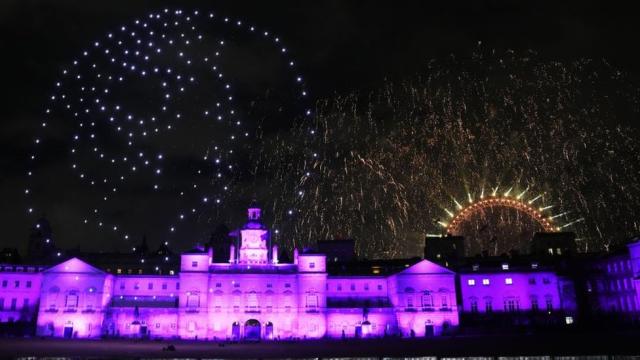
January 22, 2024, by Laura Nicholson
Navigating the Landscape of Fake News
Earlier this week, I came across a great video of a firework display, except it was created out of drones instead. The video captured an elegant aerial performance of a Chinese dragon drone display, gracefully swirling and twirling in the sky over China.
Wow, it was pretty mesmerising, but my awe soon turned to dismay when I scanned through the comments other viewers had left. While many also thought the display was a great accomplishment, others pointed to it as yet another example of fake content. Sigh!
But wait, how did those commentators know this was fake? More importantly, why am I taking their word for it that it’s fake? I felt I had no option but to check for myself whether what I was seeing in this video was true or just some fancy trickery.
Real or fake?
I did the usual; I searched to see how widespread it was and whether it was appearing on credible sites. It certainly was widespread, but mainly on YouTube and various other blogs and social media. I read reports that the drone display took place in Shenzhen, China, so I was beginning to think the doubters were wrong and that it did actually happen. Then I stumbled across a BBC News story about fireworks never being at risk of being replaced by drones because drones are too slow. Apparently, to be truly effective, drone-based displays will always need fireworks alongside them because otherwise there would be gaps in the display while the drones moved around the sky (Foster, 2023).

A drone and fireworks display from New Year’s Eve in London 2022. The 400 drones used here create a tribute to Queen Elizabeth II, and fireworks around the London Eye compliment the display.
Interesting! So, this does call into question slightly whether my Chinese dragon video is real because there are certainly no big gaps in the video I watched. I quickly checked the date of the article, and it was 2023, so there was no danger that the knowledge base was out of date in terms of what drones could do. My only issue with the article was that it was a fireworks company that stated drones would never replace fireworks. It was evident there could be underlying biases and ulterior motives at play here.
Other implications
So, there I was still scanning through the evidence, and it occurred to me that there’s all this talk about how artificial intelligence tools are making things easier for students (Malik et al., 2022), but what about the increased difficulties in trying to work out what’s real or not anymore?
Several studies have highlighted how students often struggle to distinguish facts from misinformation (Nygren et al., 2020; Pappas, 2022). The problems raised in relation to misinformation and disinformation are real, with students often struggling to identify fact and fiction from a range of sources such as websites, X (formerly Twitter), and news sites. An interesting study by Breakstone et al. (2021) found that during a website evaluation task, only 3% of students realised that a website on climate change was actually being run by the fossil fuel industry. It seemed the usual validation strategies, such as looking at how often a site is updated, looking at the web address, etc. were not effective in this case.
Conclusion
The proliferation of fake news, increased misinformation, and misleading content does pose challenges for students today. Navigating this landscape will require even more embedding of critical thinking skills and digital strategies to ensure students are skilled in identifying misinformation.
And what of my video, showing the Chinese dragon created by drones? Was it fake? Well, drone light displays are becoming increasingly popular and complex, and there’s plenty of video footage to support this. So, I’m reassured that creating a dragon out of drones is more than viable. The dragon video footage is also widespread and linked to a time and a place, which also makes me think it is real. However, having looked at other videos of the same event, there are some discrepancies. Some of the other videos have people or cars in them which, on close inspection, are moving too fast. This indicates a time lapse had been applied to the video I viewed. This would fit in with the comments made by the firework company that drones do not produce great displays because they are slow.
So, my findings indicate the drone display is real, but the video is an extension of reality in that there’s a time lapse. So, sadly it’s not quite reflective of what’s truly possible with drone displays, but it’s still impressive all the same.
Next week’s blog post will continue with this theme of misinformation and look into the range of suggested strategies for checking the authenticity of websites and media.
References
Breakstone, J., Smith, M., Wineburg, S., Rapaport, A., Carle, J., Garland, M., & Saavedra, A. (2021). ‘Students’ Civic Online Reasoning: A National Portrait’. Educational Researcher, 50(8), 505-515. https://doi.org/10.3102/0013189X211017495
Foster, L. (2023) New Year’s Eve London: Drones not as quick as fireworks. Available at: https://www.bbc.co.uk/news/uk-england-cambridgeshire-67824293 (Accessed 17/01/2024)
Malik,A.R.,Pratiwi, Y., Andajani, K., Numertayasa, I.W., Suharti, S., Darwis, A and Marzuki. (2023)
‘Exploring Artificial Intelligence in Academic Essay: Higher Education Student’s Perspective’. International Journal of Educational Research Open,Volume 5,2023,100296, https://doi.org/10.1016/j.ijedro.2023.100296.
Nygren T, Wiksten Folkeryd J, Liberg C, Guath M. (2020) ‘Students Assessing Digital News and Misinformation’. Disinformation in Open Online Media. 2020 Oct 19;12259:63–79. Available at: https://www.ncbi.nlm.nih.gov/pmc/articles/PMC7901026/ (Accessed 17/01/2024)
Pappas, S. (2022) ‘Fighting fake news in the classroom’. American Psychological Association:Monitor on Psychology.Vol. 53 No. 1. Available at: https://www.apa.org/monitor/2022/01/career-fake-news (Accessed 17/01/23)
No comments yet, fill out a comment to be the first

Leave a Reply